
Butterflies were once thought to be “beasts of the devil.” Maria Merian, a perceptive young German naturalist, knew better. She recorded her notes and drawings on the butterflies’ transformation in secret so that she would not be accused of witchcraft and later became a famous scientist and artist who helped the rest of the world understand natural life cycles. Margarita Engle brings her extraordinary story to life, accompanied by Julie Paschkis’ gorgeous illustrations.
Summer Birds: The Butterflies of Maria Merian

As she continued to grow (and grow), Ella Kate’s parents told her to stand straight. This gave Ella Kate the confidence to do and see things that other 19th century women could only dream of, including owning a special house to accommodate her gigantic size. Ella Kate narrates this fictionalized look at her life and travels, and her parents’ unfailing loyalty.
Stand Straight, Ella Kate

From a poor girl who had “a dancing beat in her feet ever since she was a bitty girl” to when she finally got a chance to perform with a professional band, Ella Fitzgerald set the world of music on its ear. Her early life is presented in energetic, downright jazzy text and richly hued illustrations.
Skit-Scat Raggedy Cat: Ella Fitzgerald

Effa Manley, born when jazz was new and sports were segregated, was passionate about fairness and baseball. She was to become the first woman inducted into the Baseball Hall of Fame along with players from the Negro Baseball League. Her life is presented in stylized illustration and clear text, for an intriguing portrait of a person and a time.
She Loved Baseball: The Effa Manley Story

No one knew that when “Bus #2857 rolled off the assembly line in 1948…[that it] would be famous…” but it did when a woman refused to give up her seat on that bus in Montgomery, Alabama. Rosa Parks’ story of bravery is effectively told in simple text and illustration. That bus is now in Michigan’s Henry Ford Museum.
Rosa’s Bus: The Ride to Civil Rights

The life and music of Odetta who became an influential folksinger and civil rights activist is revealed in lyrical, rhythmic language and evocative, swirling illustration. An affectionate afterword by the author provides factual information about the person and her influence.
Odetta: The Queen of Folk

The story of a Polish woman who helped over 400 Jewish children escape Nazi-occupied Warsaw is presented in a sophisticated, evocative, realistically illustrated picture book format. Source notes and additional resources conclude this riveting account.
Irena Sendler and the Children of the Warsaw Ghetto

For Antonia MacPherson, lying is a way of life. If it weren’t for her best friend, Harrison, and a tiny ball of fluff named Pistachio, she would be miserable. Her older sister, Your Highness Elizabeth, says Ant is in training to be a juvenile delinquent, Harrison smells like a salami sandwich, and Pistachio should be put out of his misery. When a teacher takes Ant under her wing, Ant’s way of life may have to change.
Notes from a Liar and Her Dog

Kirsten’s parents are fighting and her best friend has suddenly joined the popular crowd. Walker is the only black student at his new private school and his single mom watches over him like a hawk. What happens when Kirsten’s and Walker’s worlds collide?
If a Tree Falls at Lunch Period

Three siblings — India, Finn, and Mouse — have less than 48 hours to pack up all their belongings and fly, without Mom, to their uncle Red’s in Colorado, after they lose their house to foreclosure. When they land, a mysterious driver meets them at the airport, and he’s never heard of Uncle Red. Like Dorothy in Oz, they find themselves in a place they’ve never heard of, with no idea of how to get home.
No Passengers Beyond This Point

Nothing is the way it’s supposed to be when you live on an island with a billion birds, a ton of bird crap, a few dozen rifles, machine guns and automatics and 278 of America’s worst criminals. And then there’s Moose Flanagan. Moose’s father works as a prison guard and his family lives on the east side of Alcatraz — not far from the mobster Al Capone.
Al Capone Shines My Shoes

When Moose’s family moves to Alcatraz so his father can work as a guard and his sister Natalie (who has autism) can attend a special school in San Francisco, Moose has to leave his friends and his winning baseball team behind. Moose just wants to protect Natalie, live up to his parent’s expectations, and stay out of trouble, but on Alcatraz, trouble is never very far away.
Al Capone Does My Shirts
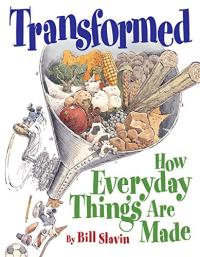
Look at how everything from baseballs to ice cream to peanut better are made and manufactured — perfect for sharing between an adult and a curious, sophisticated child. A bit of history (and a touch of gross) is included in this fascinating look at everyday items.
Transformed: How Everyday Things Are Made
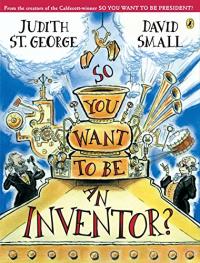
Ever wonder who invented the first dishwasher? How about Ben Franklin’s inventions? Need and inspiration seem to be the basis of all inventions, a principle used to organize this fascinating glimpse of myriad inventions and the people who invented them.
So You Want to Be an Inventor?
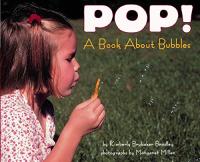
Have you ever wondered why bubbles are round? And why they pop? These and other questions are asked and answered in accessible language and crisp, full color photographs. Many easy-to-do science activities are suggested (to be done with adult help).
Pop! A Book About Bubbles
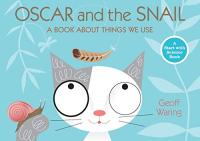
Oscar, a curious kitten, learns more about why sticks and twigs are used by birds and other materials are used differently. As with other books in the Start with Science series, Oscar’s science explorations are just right for younger children and may launch further exploration.
Oscar and the Snail: A Book About Things That We Use

A lively, brief, rhyming look at various inventions and the people who created them weaves together with the author’s speculation about what might have been behind the brainchild. Fact and fancy combine to motivate a new generation of inventors!
Imaginative Inventions
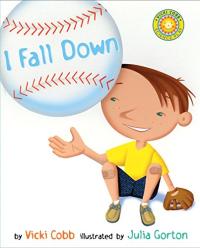
Activities suggested are easy and engaging for young children and an adult. This title from the Science Play series — intended for the youngest budding scientist — uses conversational language and uncluttered illustrations to encourage further observation and experimentation.
I Fall Down
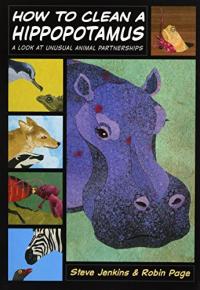
Unlikely animals work together to the benefit of both as do more usual pairings such as dogs and people. How and why these relationships work is detailed in brief text and handsome collage illustration.
How to Clean a Hippopotamus: A Look at Unusual Animal Partnerships
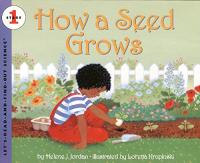
How a tiny seed can grow into an enormous plant (think acorn) is introduced through crisp text and effective illustrations. Suggested activities are easily doable (though adult help is required) and support concepts introduced.
How a Seed Grows

Three books, each a sophisticated examination at how structures were built — a cathedral, castle, and mosque — have been revised, refreshed with current information, and put in one volume. The author/illustrator’s work is complex but will intrigue young readers especially if shared with an adult.
Built to Last

Edward thinks he only wants a baby brother but when his parents come home with his new sibling, Edward is thrilled to meet baby Sara. Cartoon illustrations present the family and getting-ready-for-baby rituals accessibly and comfortingly.
Will It Be a Baby Brother?

As her baby grows, a mother shares her thoughts about what it will grow up to be. The conversations with her older son over time are seen through the seasons and different activities while the child’s interpretations are presented in wordless double page spreads. The satisfying saga concludes when the boy and his granddad go to meet the new baby.
There’s Going to Be a Baby

Stanley, a slightly lumpy but appealing dog, does not adjust well when his people bring home a cat. Eventually, however, Stanley and his “little sister” work it out much as children do with new additions to their families. Textured illustrations add verve to the lively language in this appealing book.
